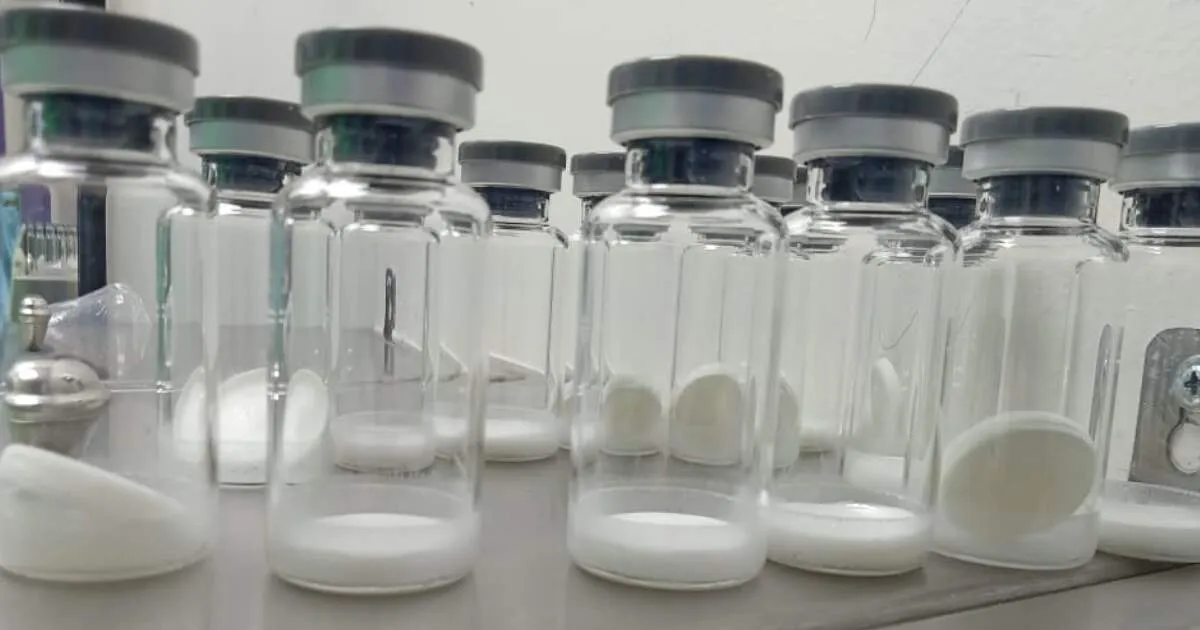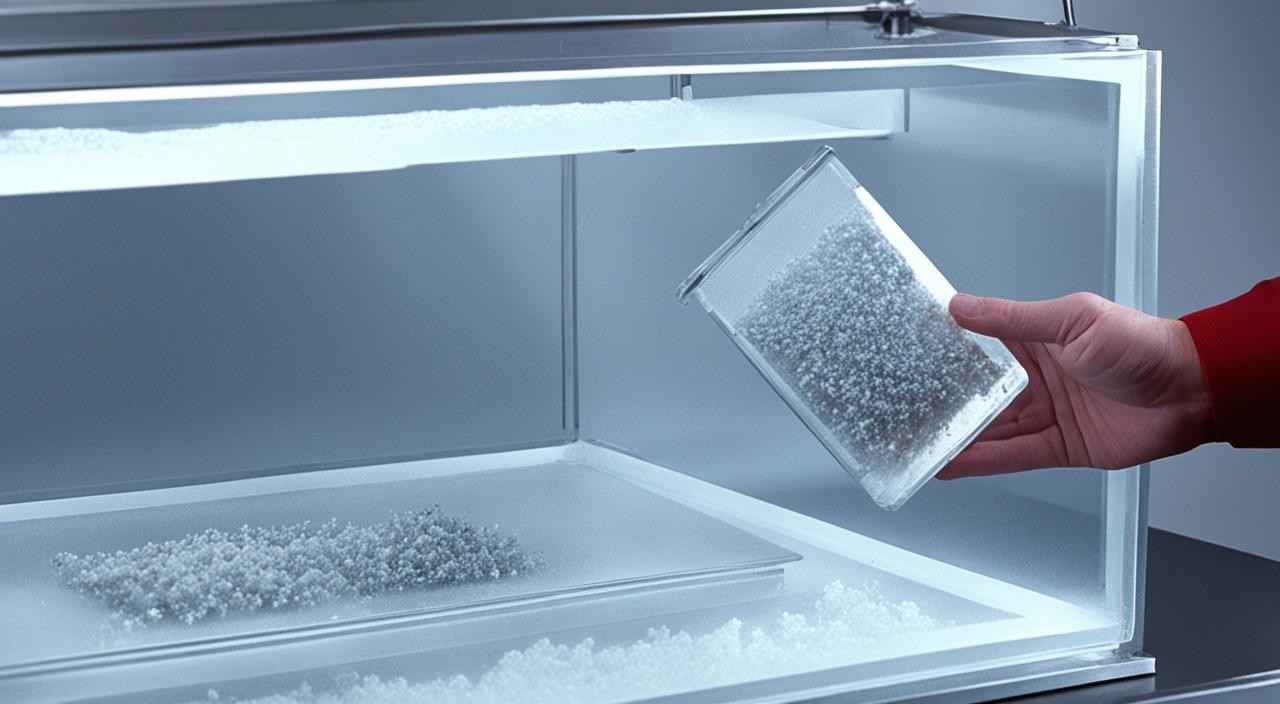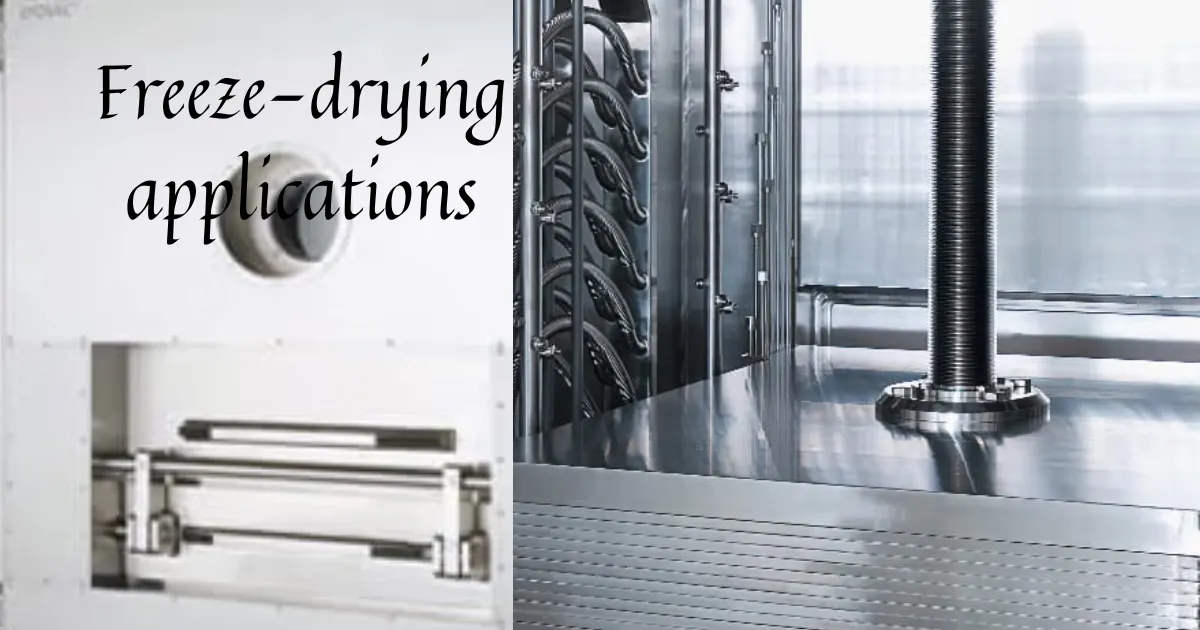Freeze drying applications, sometimes referred to as lyophilization, are low-temperature dehydration methods used on items that are sensitive to heat. Many pharmaceutical manufacturers currently use this technology as a normal procedure. because it delicately dries goods without impairing their physical or biological characteristics. Freeze-drying technology has been adopted by many pharmaceutical manufacturers. It gently dries products without ruining their biological activities or physical properties.
Freeze drying, sometimes referred to as lyophilization, is primarily used to extract water without harming delicate items, most of which are biological. Because of this, they can be kept in a state that is permanently storable and then reconstituted by adding more water.

Freeze drying, also known as lyophilization, is a process that helps preserve many things. It’s used to making medicines last longer and keeping food fresh. Let’s look at how freeze drying works and its benefits.
History
Preserve chemical and physical properties.
In contrast to heat-based drying techniques, sublimation and desorption—two low-temperature processes—are used in freeze drying to evaporate water. It prevents overheating to preserve the integrity of the product; its chemical and physical properties are unaffected.
Preserve biological activity.
For the pharmaceutical industry, where many products and specimens are delicate, unstable, and heat-sensitive, this preservation technique is ideal. Typically, freeze drying ensures biological activity >90%.
Safeguarding Biological Samples
Freeze drying changes the game in biological sample preservation. It keeps tissues, cells, and other important samples in top shape for a long time. This lets researchers and doctors do important studies and find new treatments. It’s a big step forward for science.

“Freeze drying has revolutionized how we save the natural world, from flowers to vital biological samples. It’s a science wonder that deepens our understanding and love for the world around us.”
Easy to store and transport
Drugs that have been freeze-dried have a moisture content of less than 3%, making them appropriate for long-term transportation and storage at room temperature (25 °C). All that’s required to reconstitute the product is water. Freeze drying is one of the methods most frequently utilized in the pharmaceutical business because of its ability to stabilize goods and lengthen the shelf life of pharmaceuticals.
Pharmaceutical Freeze Drying Process
Loading stage: After starting the freeze dryer, wait for the loading temperature to be achieved, then open the freezer door on aseptic area side as per the loaded recipe ine ALUS (Auto loading and unloading system), load the empty depyroginated vials and after that, load product-filled vial in the freeze dryer and then start the freezing Cycle by SCADA or
Loading stage: Once the freeze dryer is started and the loading temperature is reached, the door is opened in a sterile area. Empty and filled vials are then loaded into the freeze dryer before initiating the freezing cycle using SCADA.
Freezing: Freezing of the aqueous product is done swiftly in order to avoid the formation of big crystals that could burst the material’s cell walls.
Primary Drying (Sublimation): This is the second phase of the freeze drying process in which pressure is reduced and heat is applied to vaporize the frozen water. This process takes hours to several days to complete, depending on the sample type. Once primary drying is complete, 92–95% (bbound water) of the water has already been sublimated out
Secondary Drying (Adsorption): In order to remove any remaining moisture or bound water, the temperature is raised even further in this last stage. By raising the temperature, the remaining water that is trapped in the solid matrix is desorbed.
Stoppering stage: After completing the secondary drying process, vials are fully stoppered in the freeze dryer using the stoppering force applied by the shelf.
Unloading stage: after completion of freeze drying and stoppering stage, reach the unloading temperature, open the door on aseptic area side and unload the freeze drying product. And send for capping of freeze-dried vials
Freeze-dried pharmaceuticals are then packaged in glass vials, like 50 ml vials,20ml 20 ml vials,10 ml vials, as per the product volume or dose required, with rubber stoppers of grove type and an aluminum seal required during capping of the vial at the time of unloading of freeze-dried pharmaceutical lyophilized productcrimping.
Pharmaceuticals Suitable for Freeze Drying
Examples of freeze-dried pharmaceutical products are:
- Vaccines: Freeze-drying preserves vaccines by removing moisture, ensuring their effectiveness, and extending their shelf life.
- Antibodies: Freeze-drying maintains the stability of antibodies, which is crucial for various therapeutic and diagnostic applications.
- Red blood cells: Freeze-drying allows for the preservation of red blood cells, enabling their storage for transfusion purposes without the need for continuous refrigeration.
- Plasma: Freeze-drying plasma helps retain its clotting factors and other essential components, facilitating its storage and transport.
- Hormones: Freeze-drying ensures the stability of hormone medications, maintaining their potency over extended periods.
- Bacteria: Freeze-drying preserves bacterial cultures for research, diagnostic, and therapeutic purposes by removing moisture while maintaining viability.
- Enzymes: Freeze-drying preserves the activity of enzymes, essential for various biochemical processes and industrial applications.
- Probiotics: Freeze-drying maintains the viability of probiotic bacteria, which is crucial for their effectiveness in promoting gut health when consumed.
- Vitamins and minerals: Freeze-drying preserves the integrity of vitamins and minerals in pharmaceutical formulations, ensuring their potency.
- Collagen peptides: Freeze-drying preserves collagen peptides used in wound healing, tissue engineering, and cosmetic applications, maintaining their structural and functional properties.
- Electrolytes: Freeze-drying stabilizes electrolytes for rehydration solutions and intravenous therapies, ensuring proper electrolyte balance in the body.
- (APIs): The process of freeze-drying is employed to stabilize active pharmaceutical ingredients (APIs)
- Diagnostic Kits: The process of freeze-drying reagents ensures their preservation and effectiveness during testing processes.
- Tissue Engineering: Freeze-drying facilitates the preservation of tissue scaffolds used in tissue engineering applications, allowing for long-term storage and transport.
- Liposomes and Nanoparticles: To improve stability and increase shelf life, freeze-drying is used in the development of liposomal and nanoparticle-based drug delivery systems
- Herbal Extracts: Freeze-drying preserves the active compounds in herbal extracts, ensuring their efficacy and potency in pharmaceutical formulations.
- Gene Therapy Products: Freeze-drying is used to preserve viral vectors during the production of gene therapy products.
Pharmaceutical Freeze Dryers Recommend
- Millrock Technology: freeze drying systems tailored for pharmaceutical applications, offering various sizes and configurations to meet specific needs.
- SP Scientific (VirTis): Provides a range of freeze dryers designed for the pharmaceutical and biotechnology industries, offering advanced features for precise control and efficiency.
- IMA Life offers pharmaceutical freeze dryers with cutting-edge technology and customizable options to accommodate different product types and production scales.
- GEA Group provides pharmaceutical freeze dryers known for their reliability, scalability, and efficiency. Suitable for a wide range of pharmaceutical products.
- Telstar Life Science Solutions offers pharmaceutical freeze dryers equipped with advanced control systems. And energy-efficient technologies to optimize the lyophilization process.
- Labconco is suitable for pharmaceutical research and development. Offering compact designs and precise temperature control.
- Biocool specializes in manufacturing freeze dryers for the pharmaceutical and biotechnology industries, offering customizable solutions to meet specific production requirements.
- SP Scientific (Hotpack): Provides pharmaceutical freeze dryers designed for small to mid-sized production batches, featuring user-friendly controls and robust construction.
- Hull Corporation offers pharmaceutical freeze dryers with advanced process monitoring and control systems, ensuring consistent and reliable lyophilization results.
- Azbil Telstar provides pharmaceutical freeze dryers equipped with state-of-the-art technologies for optimal performance and product quality. Suitable for various pharmaceutical formulations
- Lab: Basic Research Purpose.
- Lab R&D and Pilot Production.
- Industrial Production.
These companies offer a range of freeze dryers tailored to pharmaceutical applications. Providing reliable solutions for lyophilization processes in the industry.
Extending Shelf Life: Freeze-Drying in Food Industry
The food industry uses freeze-drying to make food last longer. It turns fruits, vegetables, and even meals into dry forms that don’t need refrigeration. This method maintains the food’s taste and nutrients, making it healthier and lasting longer.
| Application | Benefits |
|---|---|
| Pharmaceutical Preservation |
|
| Food Industry |
|
Freeze drying is used in many industries, each with its own benefits. It’s a powerful tool that changes how we preserve things. Stay tuned for more on freeze-drying in the world of plants and biology.

Freeze-drying applications in Botanical and Biological Realms
Freeze drying is not just for medicine and food. It’s also a key player in the world of botany and biology. This method keeps flowers’ delicate structure and bright colors intact. It lets us enjoy nature’s beauty in our homes or offices.
Freeze drying does more than make flowers last longer. It’s crucial for keeping biological samples like tissues and cells safe for research and medicine. This way, scientists and doctors can study and use these samples with confidence. It helps us learn more about nature and improve health care.
Preserving the Beauty of Flowers
Freeze drying turns flower drying into an art. It removes moisture from flowers without harming their detailed structures. This keeps flowers, like roses and sunflowers, looking vibrant for a long time. Thanks to flower drying processes, we can enjoy nature’s beauty for much longer than before.
Conclusion
Freeze-drying, also known as lyophilization, has become a standard process in pharmaceutical manufacturing due to its ability to delicately dry products without compromising their biological activities or physical properties. This technology is crucial for preserving a wide range of pharmaceutical products, including vaccines, antibodies, hormones, enzymes, and more. With its ability to remove moisture while maintaining product integrity. Freeze-drying ensures long-term stability and facilitates the easy storage and transportation of pharmaceuticals. The process involves freezing and primary drying (sublimation). And secondary drying (adsorption) stages, resulting in products with minimal moisture content suitable for long-term storage. Various pharmaceutical freeze dryer manufacturers provide innovative solutions tailored to meet the specific needs of the pharmaceutical industry, ensuring reliable and efficient lyophilization processes.
FAQ
What are the key applications of freeze-drying?
Freeze drying, also known as lyophilization, is used in many fields. It’s key for keeping medicines, food, flowers, and biological samples safe for a long time.
How does freeze drying help in the pharmaceutical industry?
In the pharmaceutical world, freeze drying is vital. It keeps sensitive medicines, like vaccines, stable. This way, these products last longer and stay safe during transport.
What are the benefits of using freeze drying in the food industry?
Freeze-drying is great for food preservation. It keeps food fresh without losing its taste or nutrients. This method also makes food lighter and easier to store and move.
How does freeze-drying impact the preservation of flowers and biological samples?
Freeze drying is also used for flowers and biological samples. It keeps flowers looking beautiful and lasts for a long time. For research, it helps keep tissues and cells safe, which is crucial for science and medicine.
What are the key considerations in industrial freeze-drying equipment and processes?
Making freeze-dried products on a large scale requires special equipment and processes. Companies focus on creating the right freeze dryers and packaging to keep the products fresh and of high quality.
